VERY RARE! WWII 1944 Operation Stalemate II - Palau Campaign (Urukthapel & Eilmalk Island) CONFIDENTIAL Combat Intelligence Invasion Maps (Double-Sided)
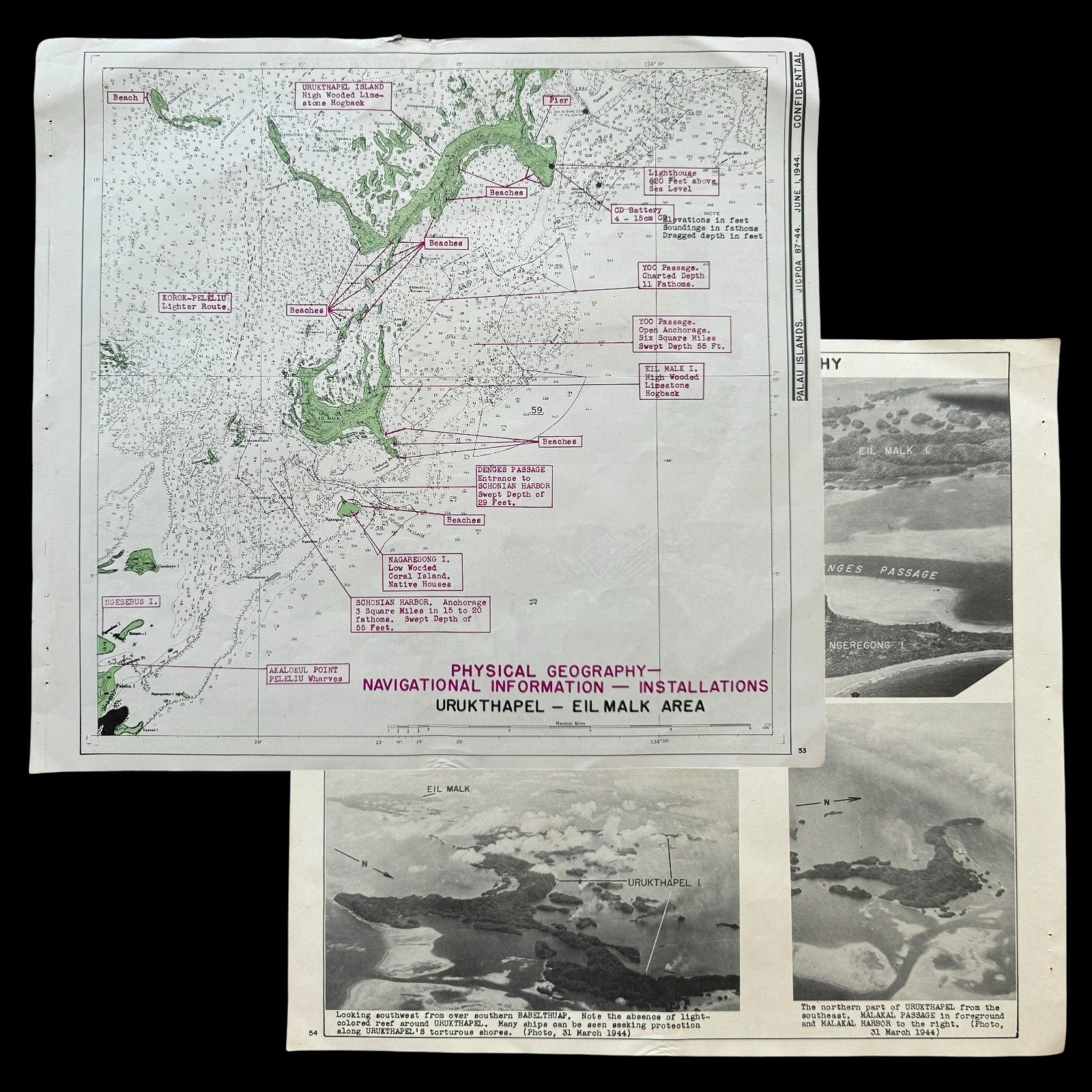
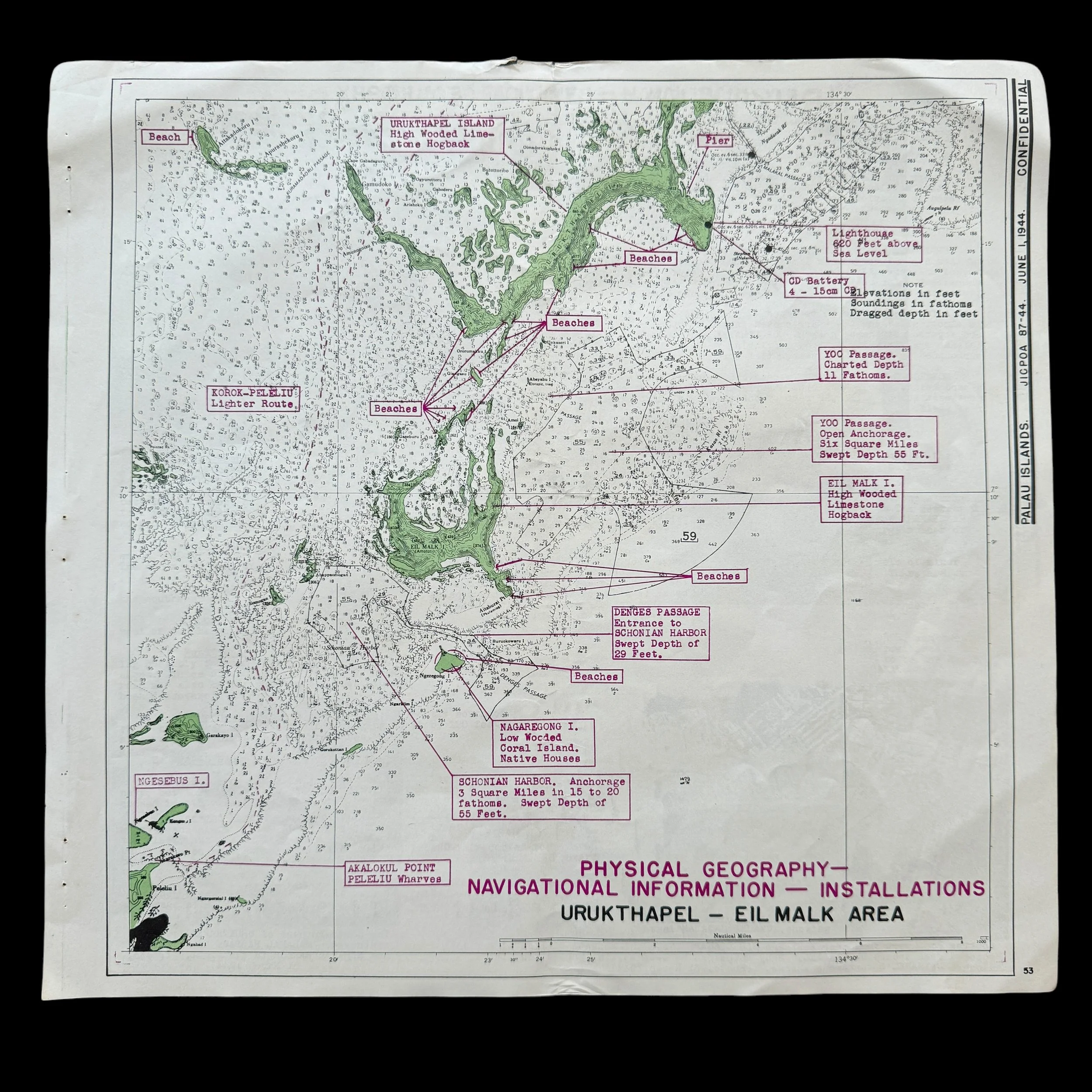
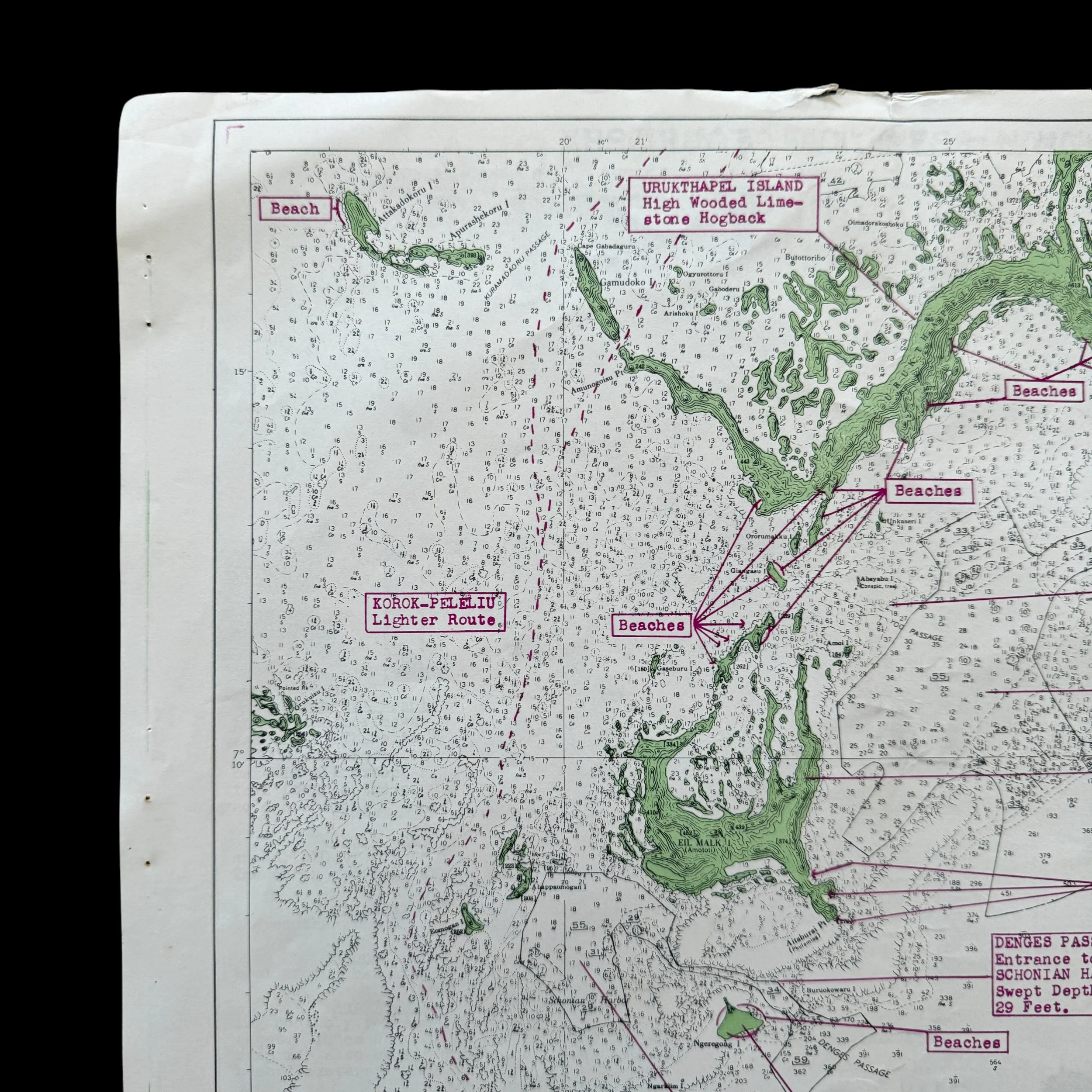

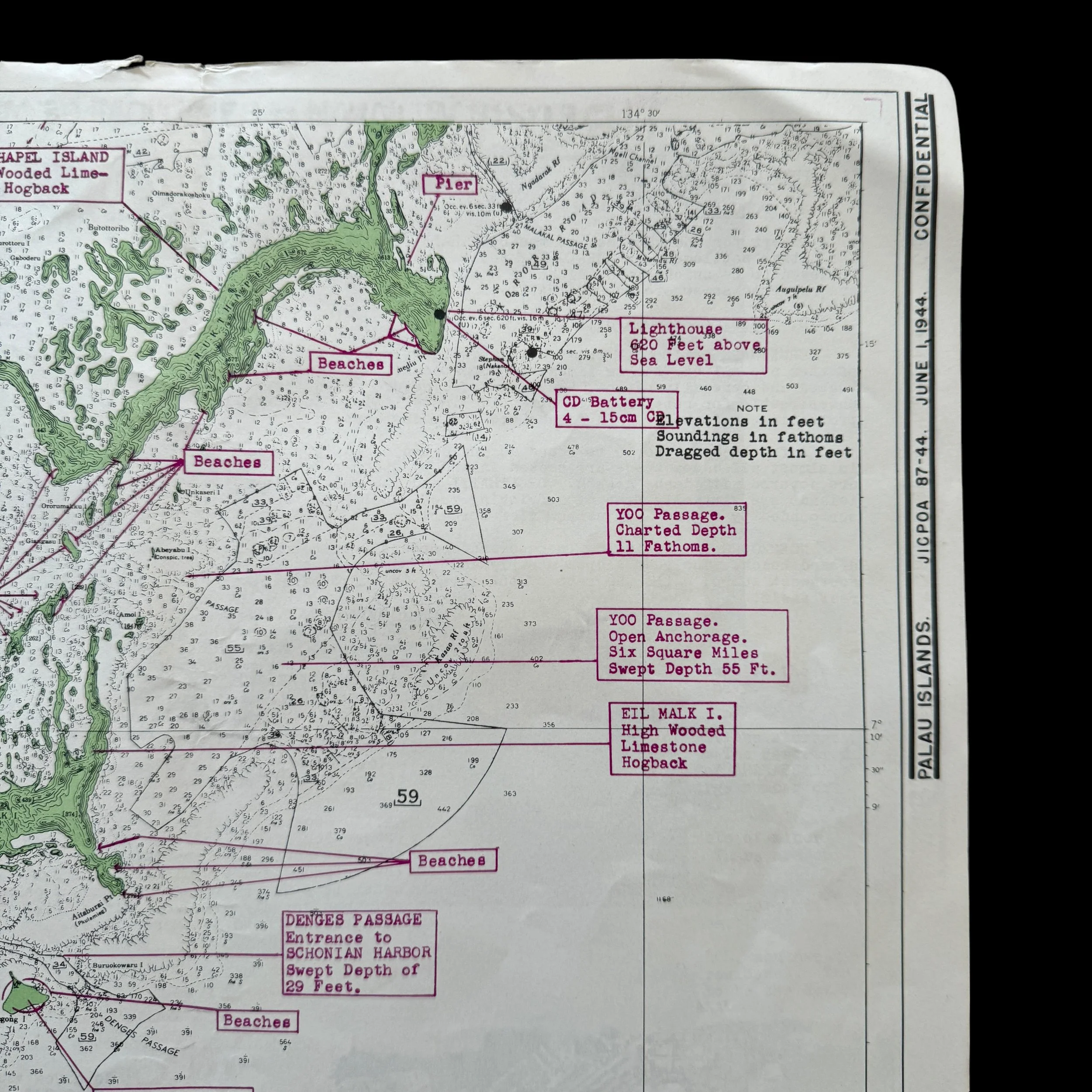
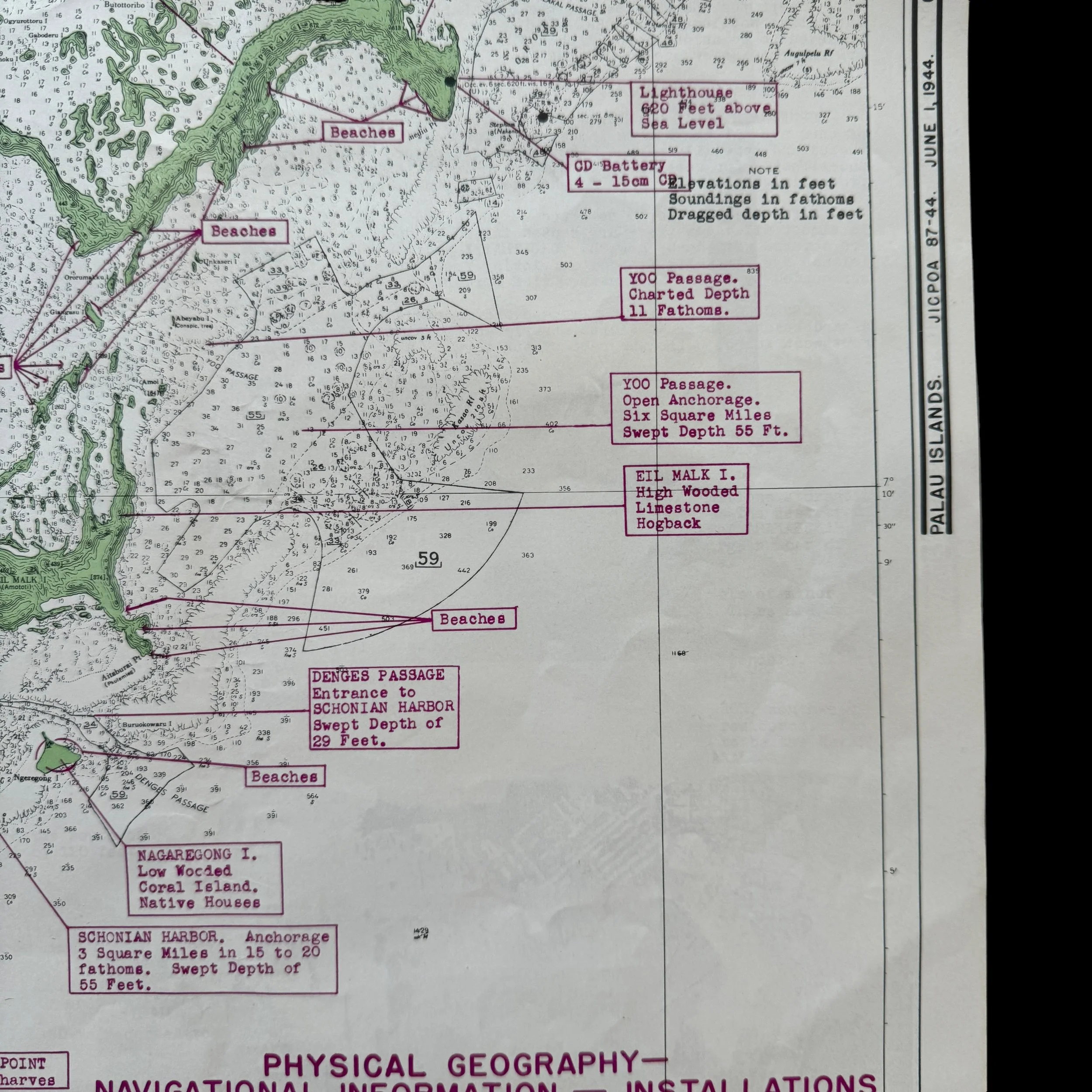
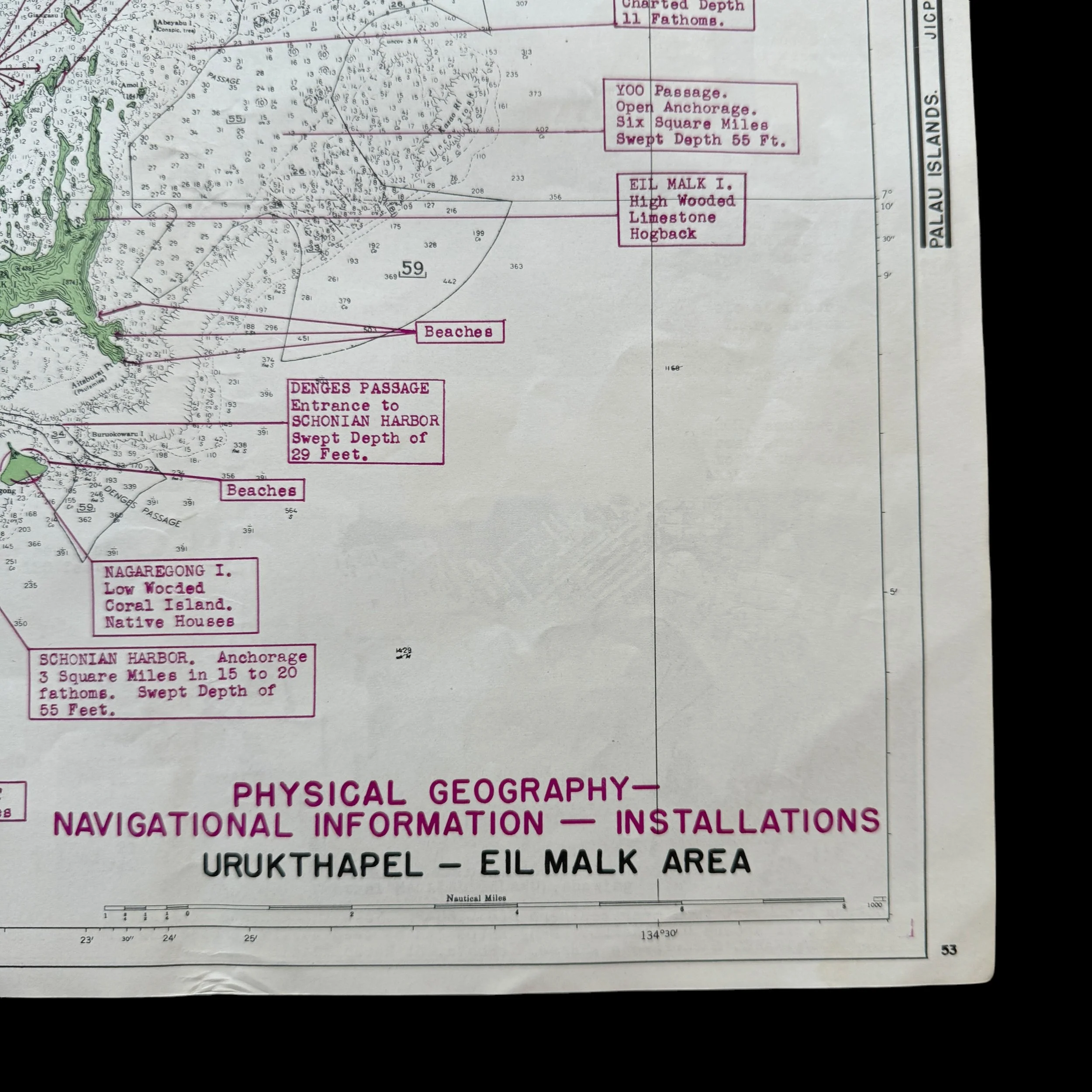
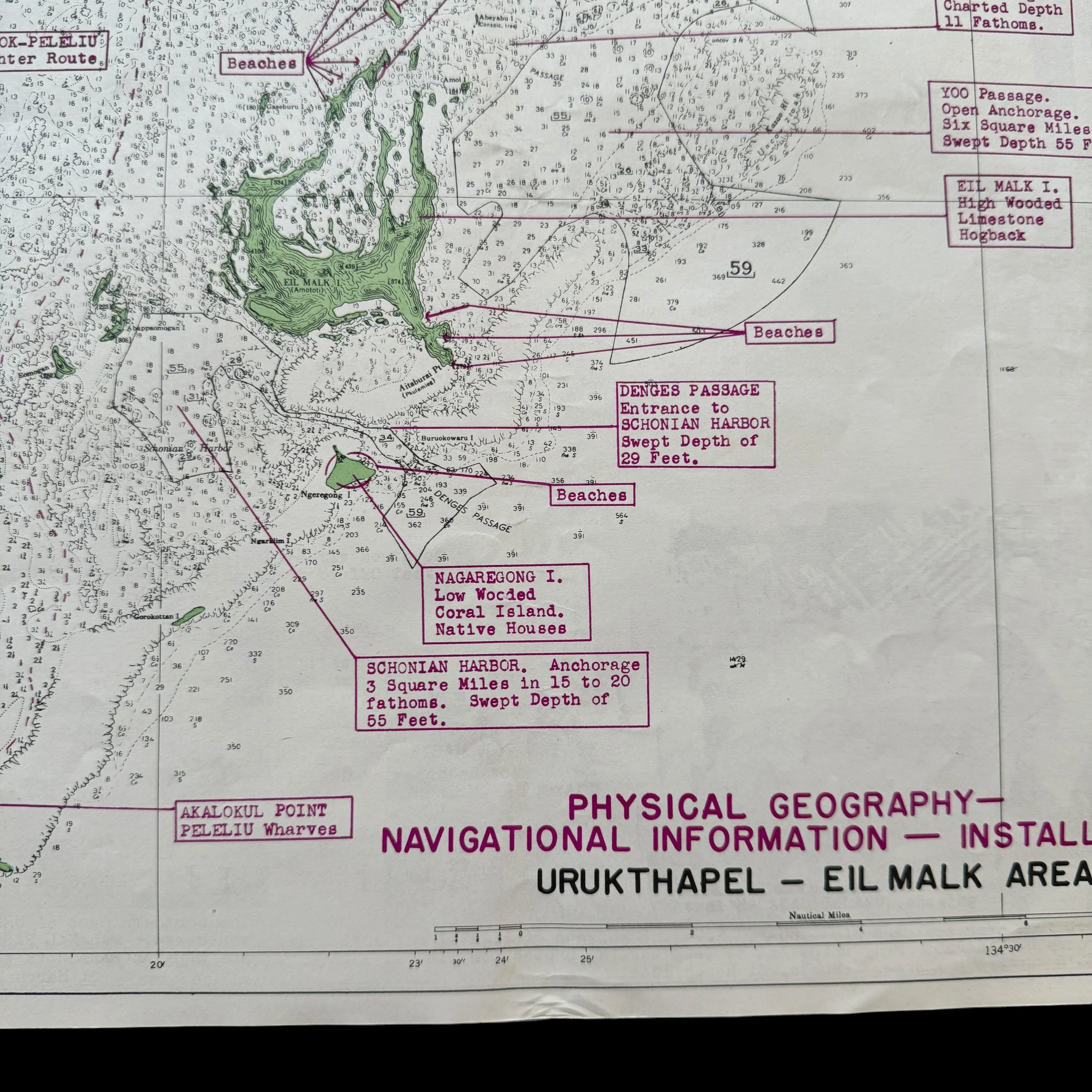

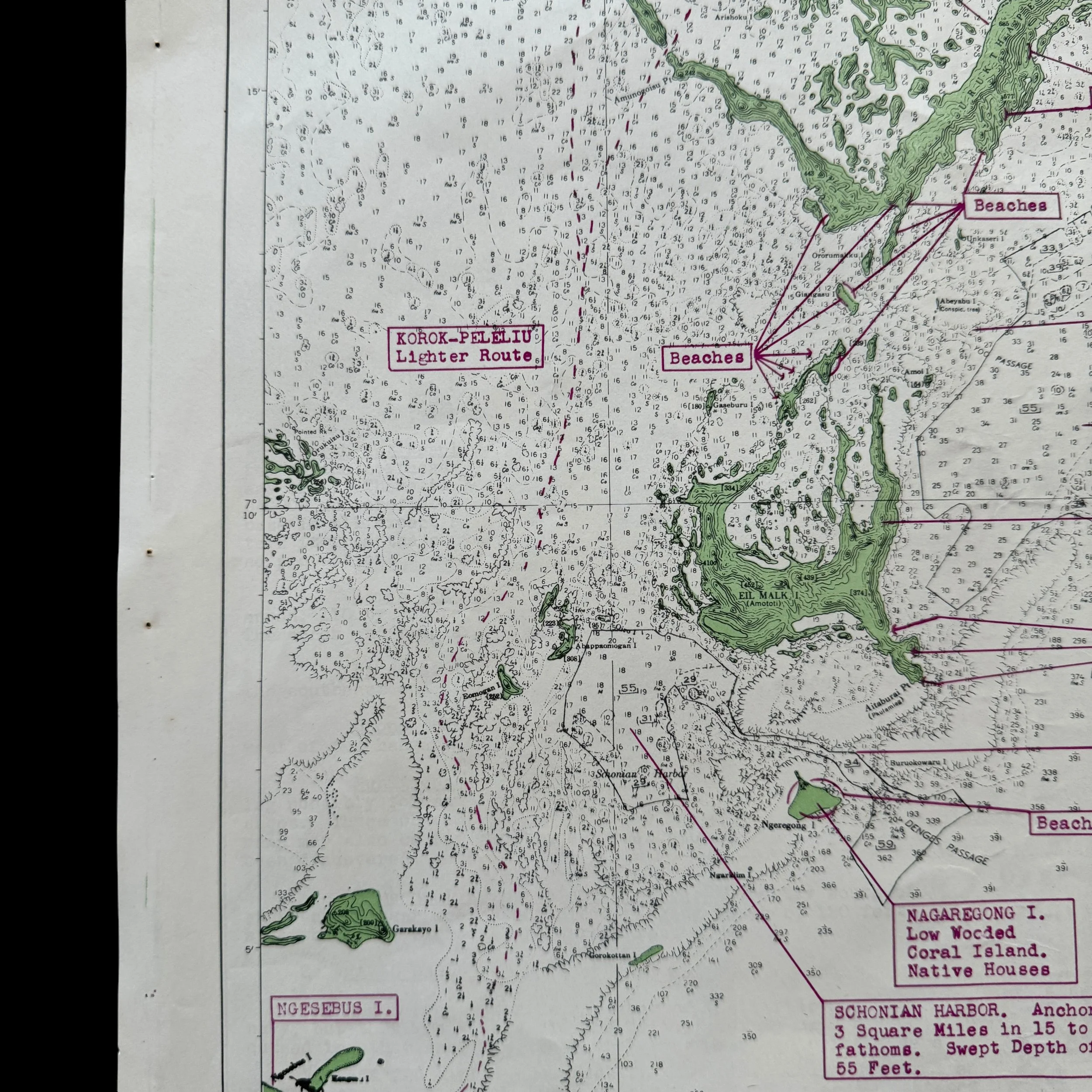

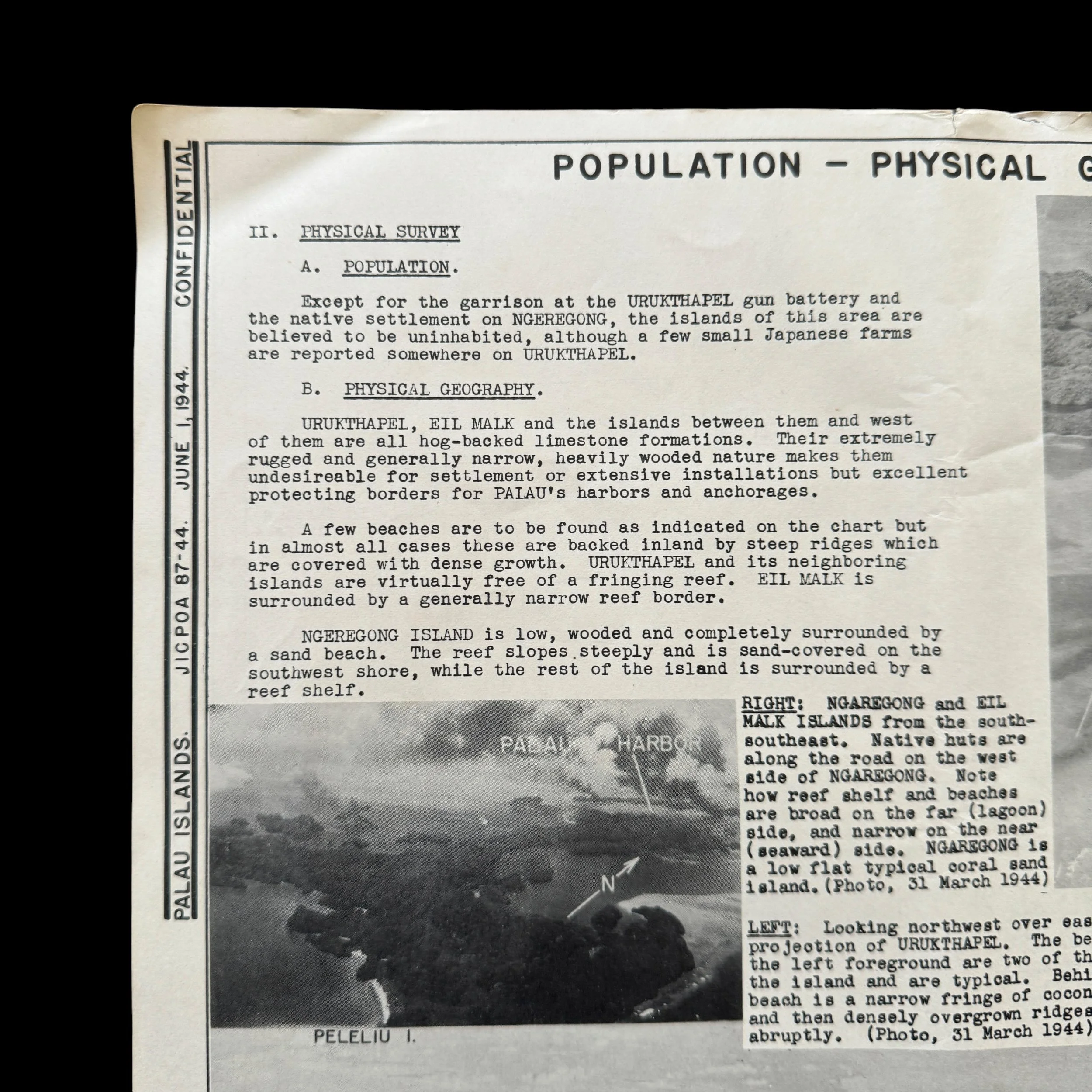

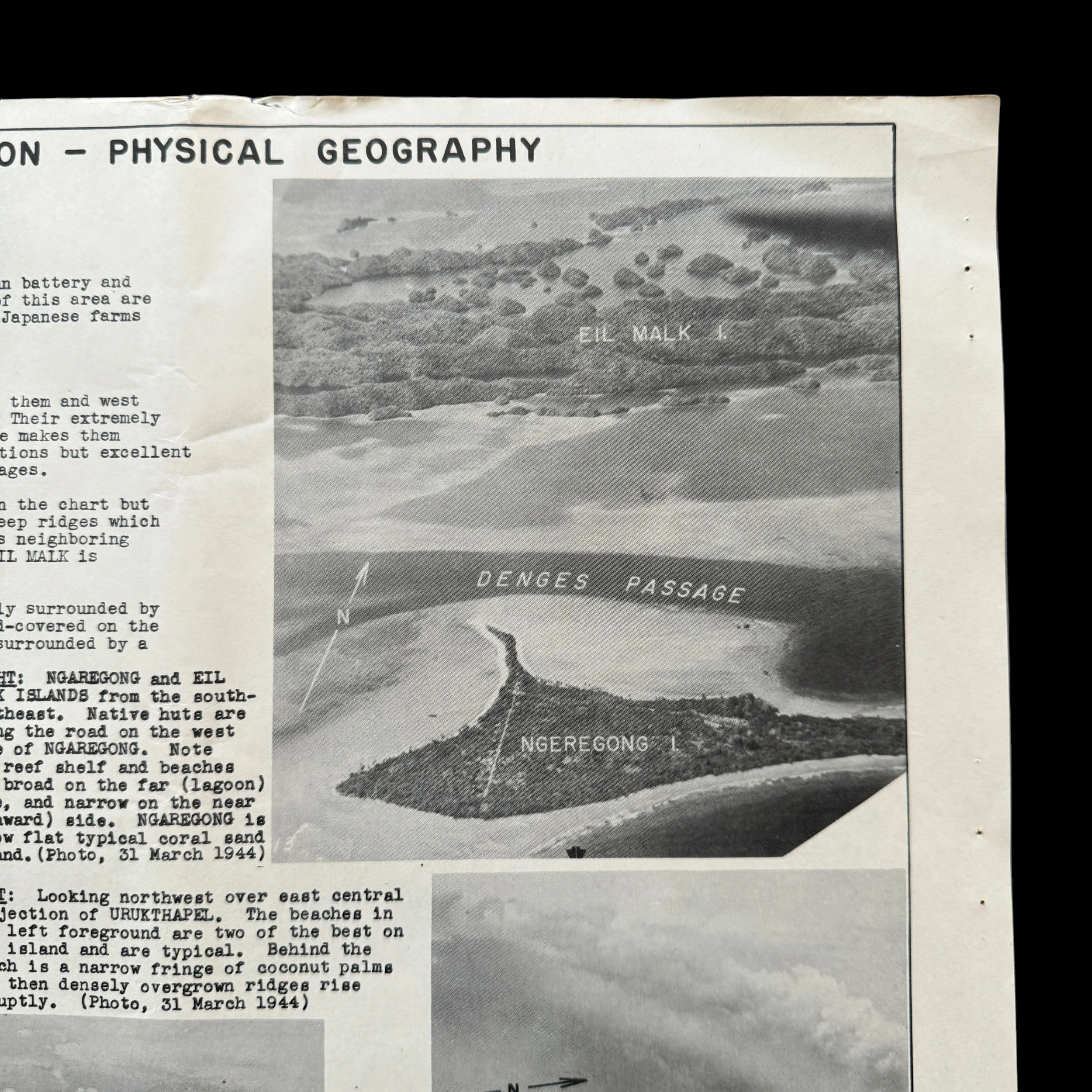
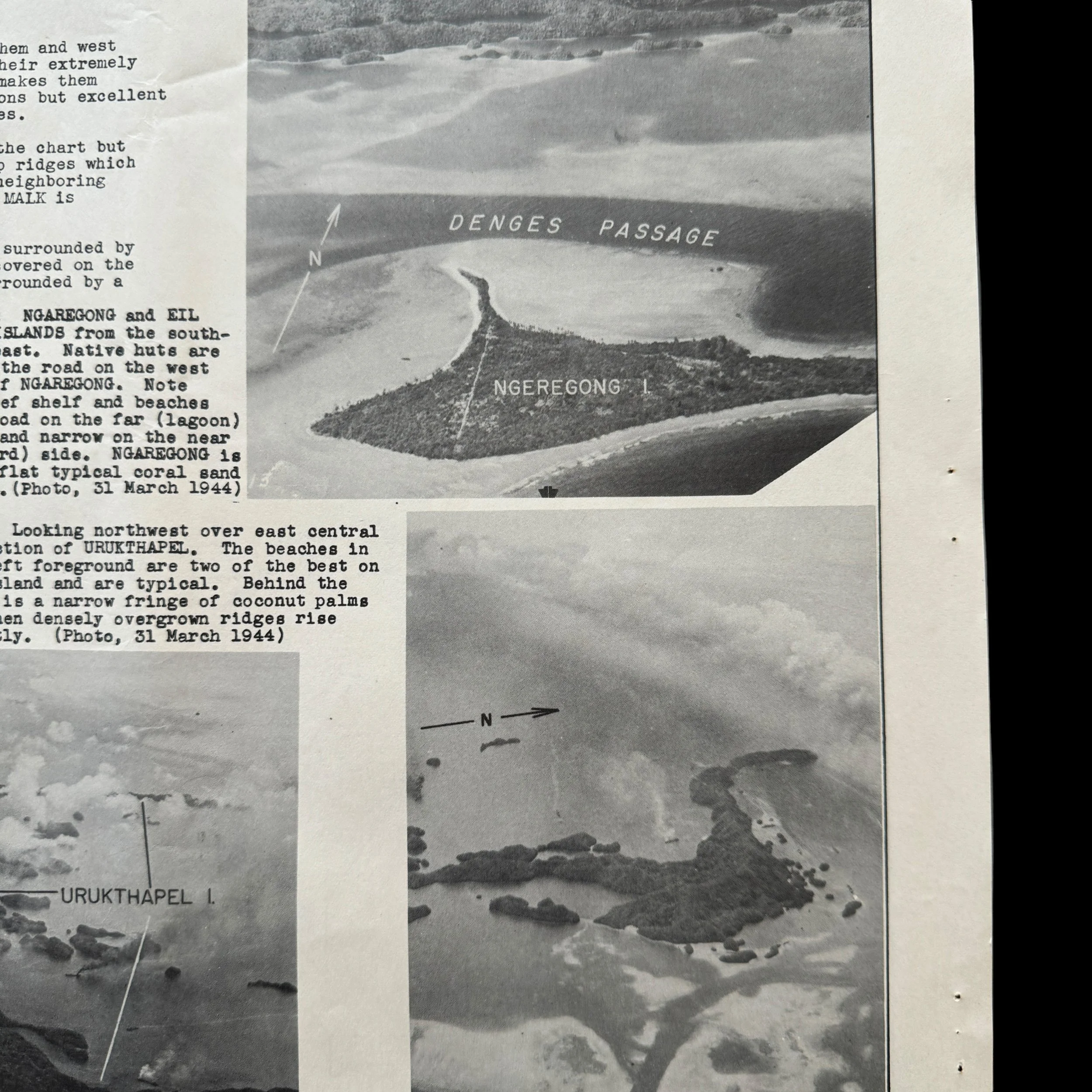
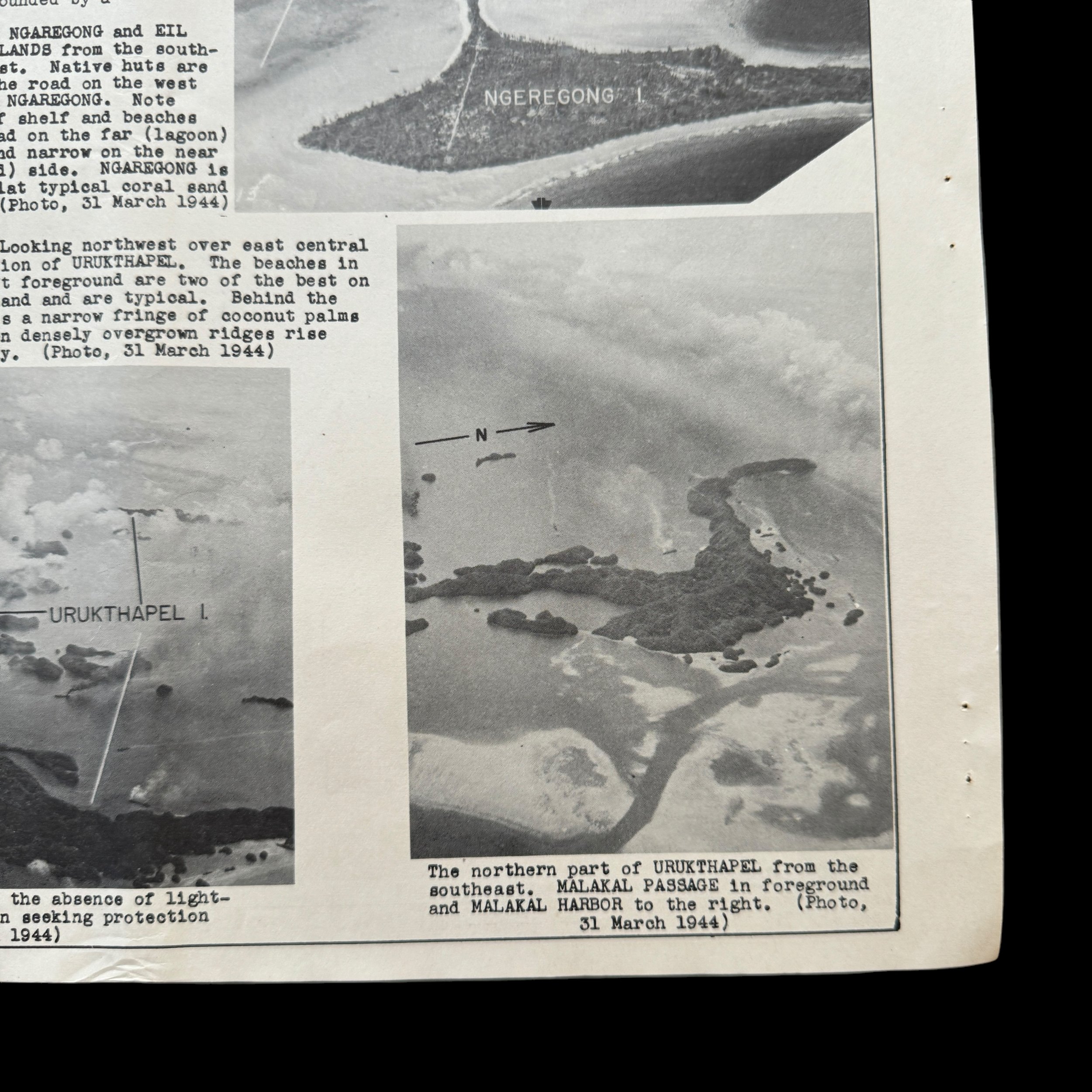

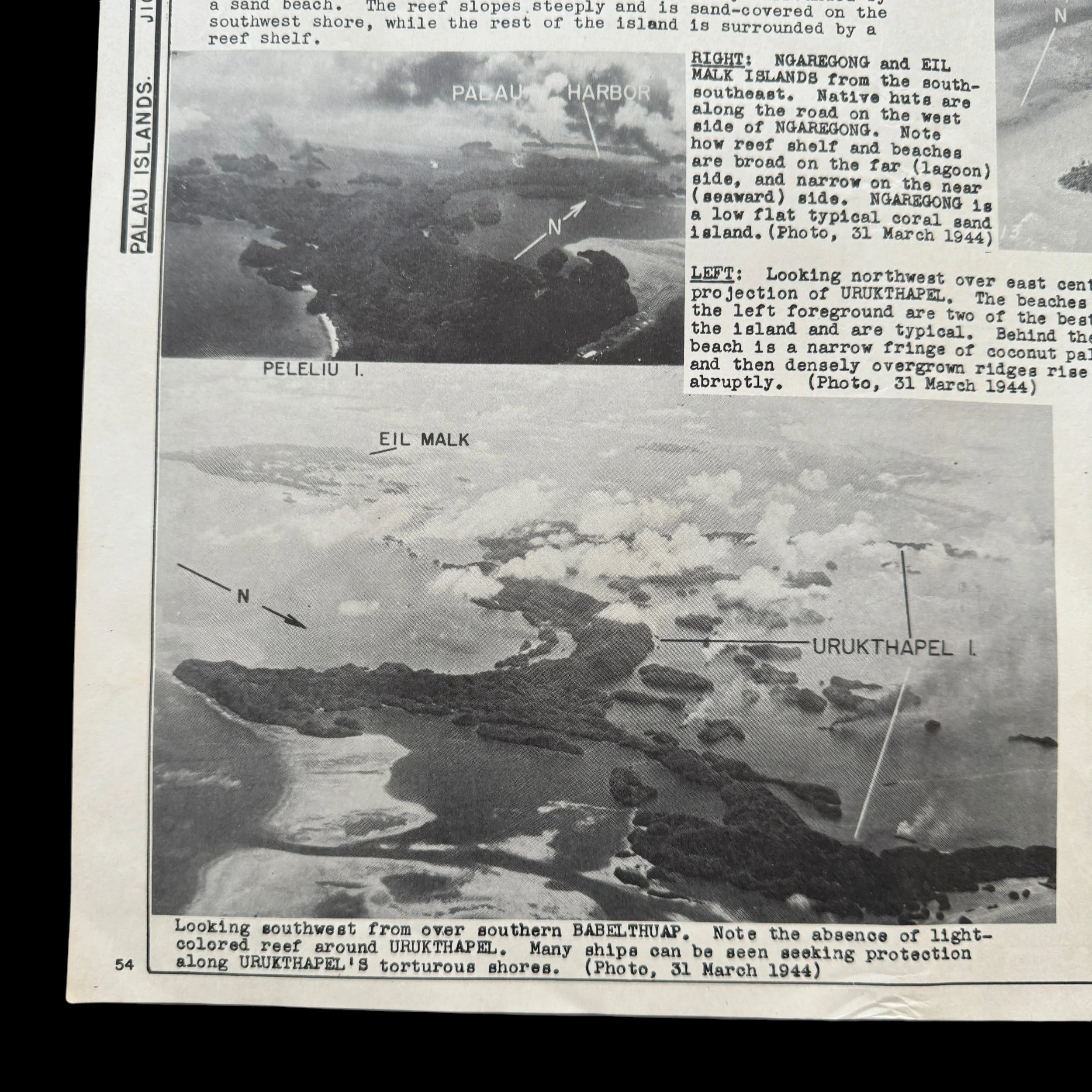
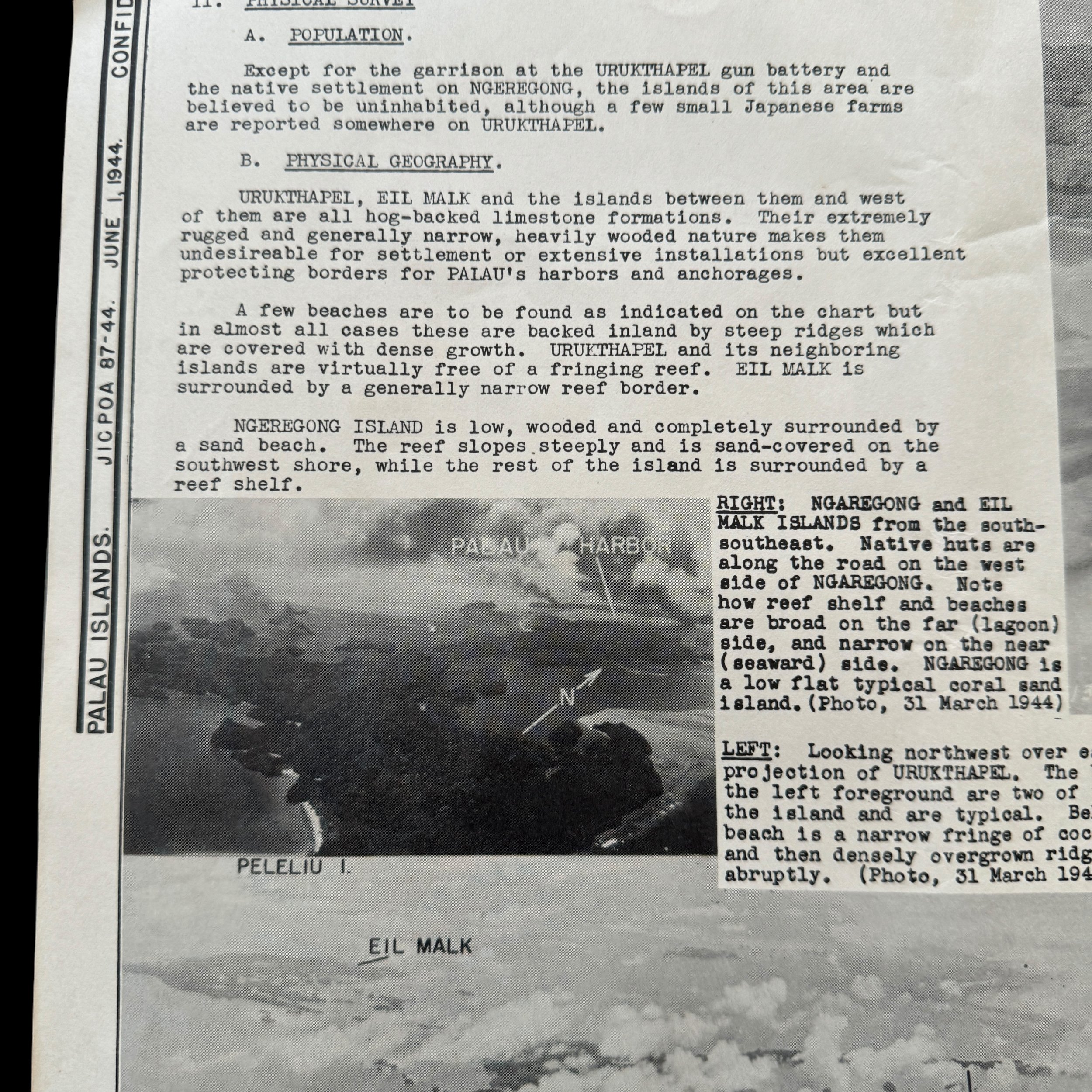

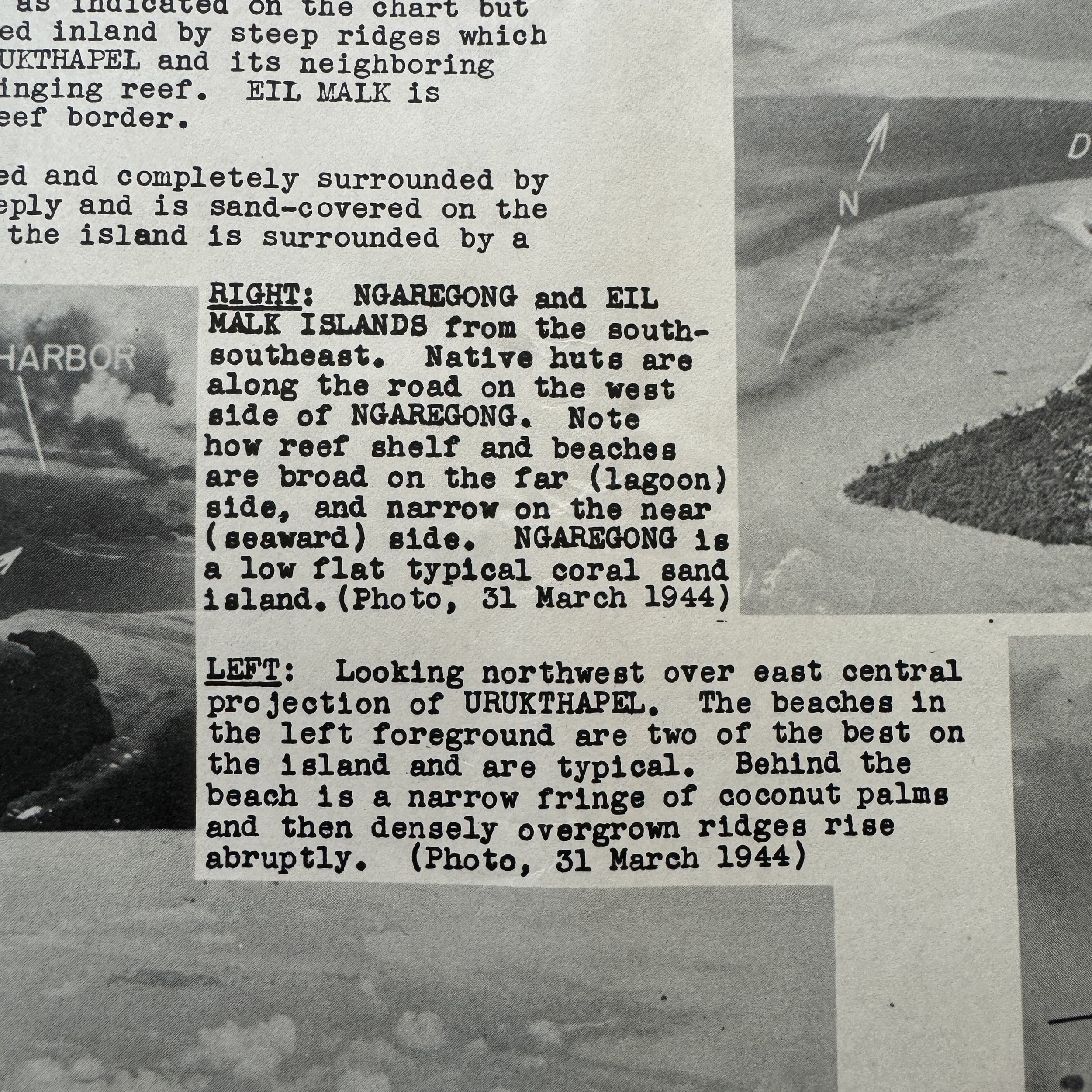

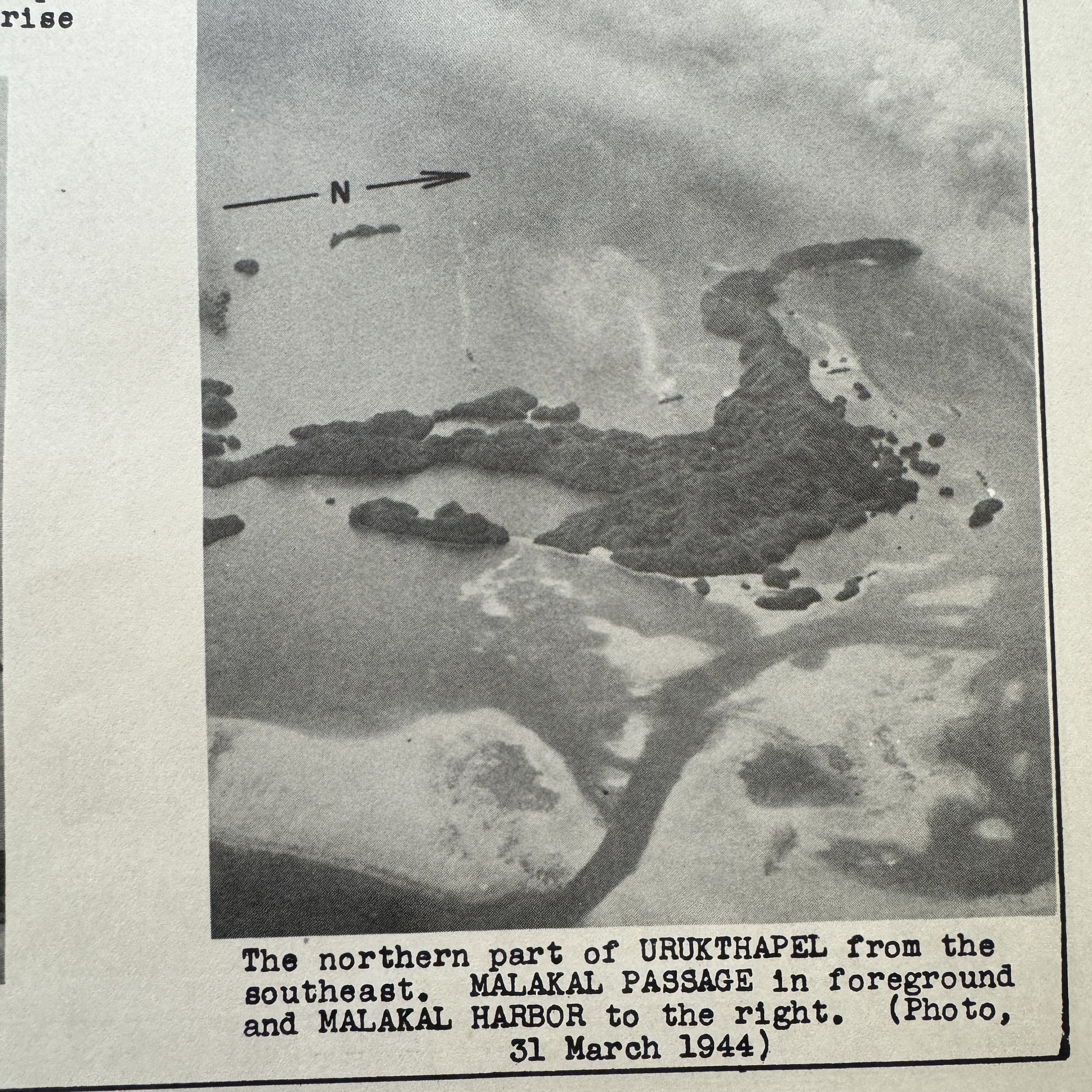
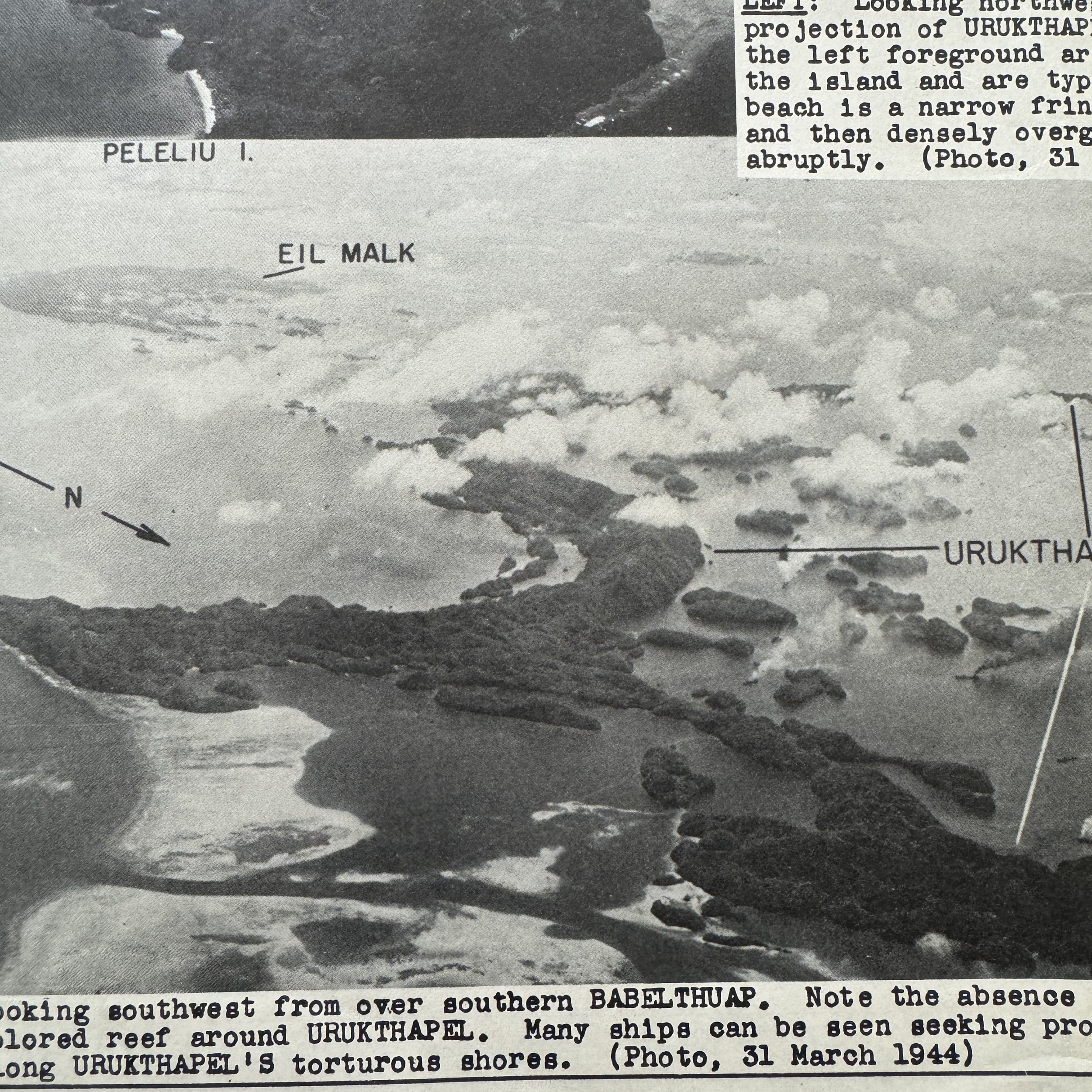

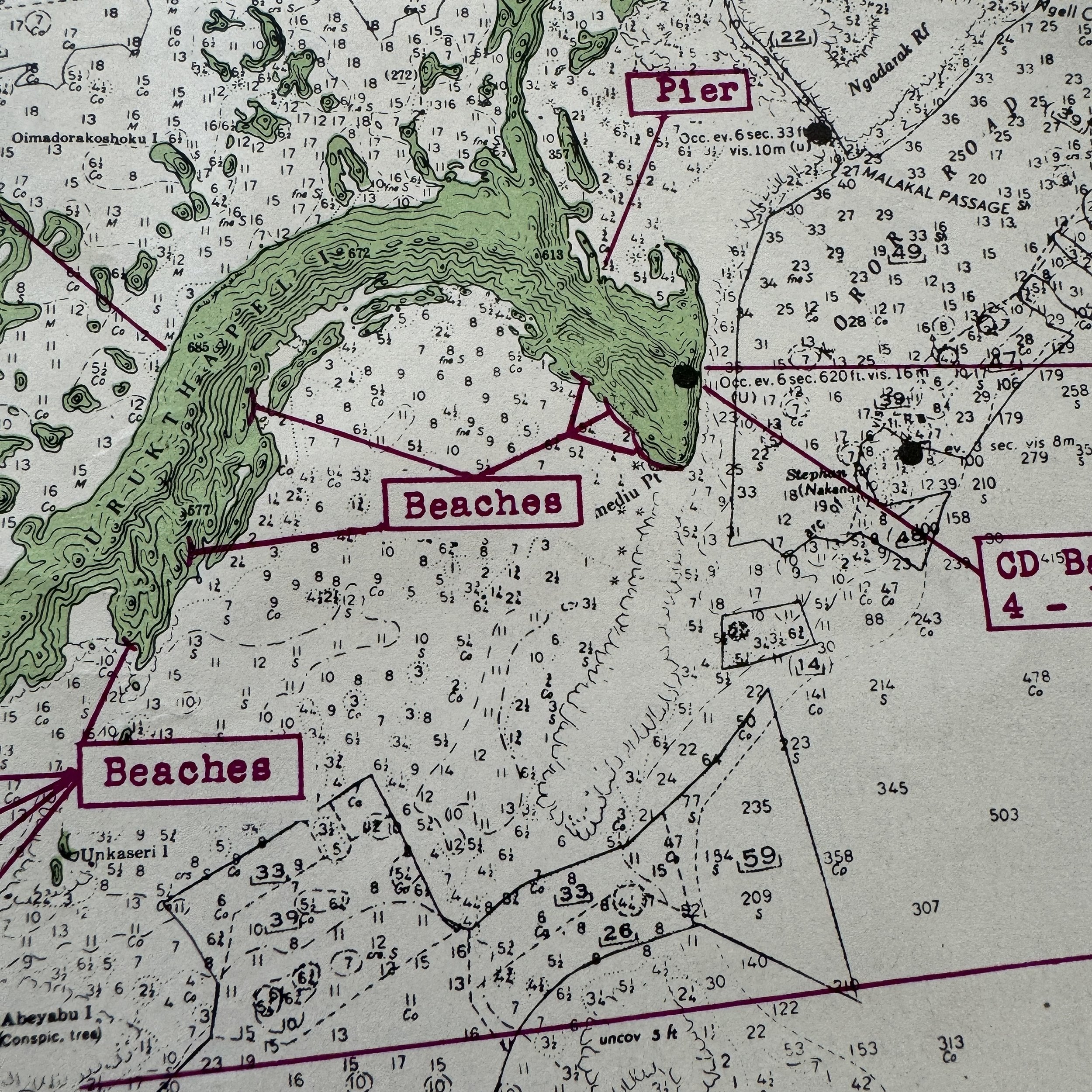

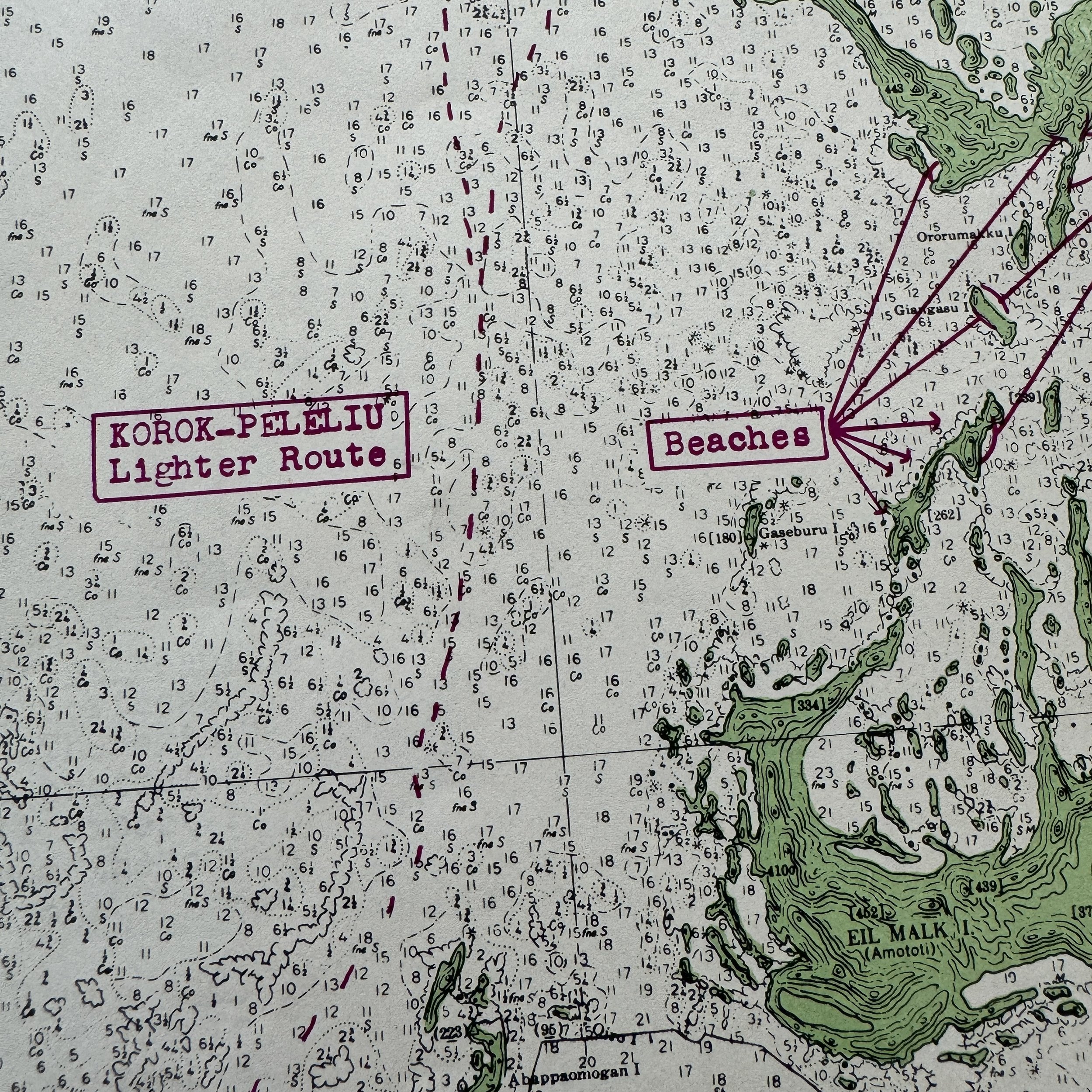
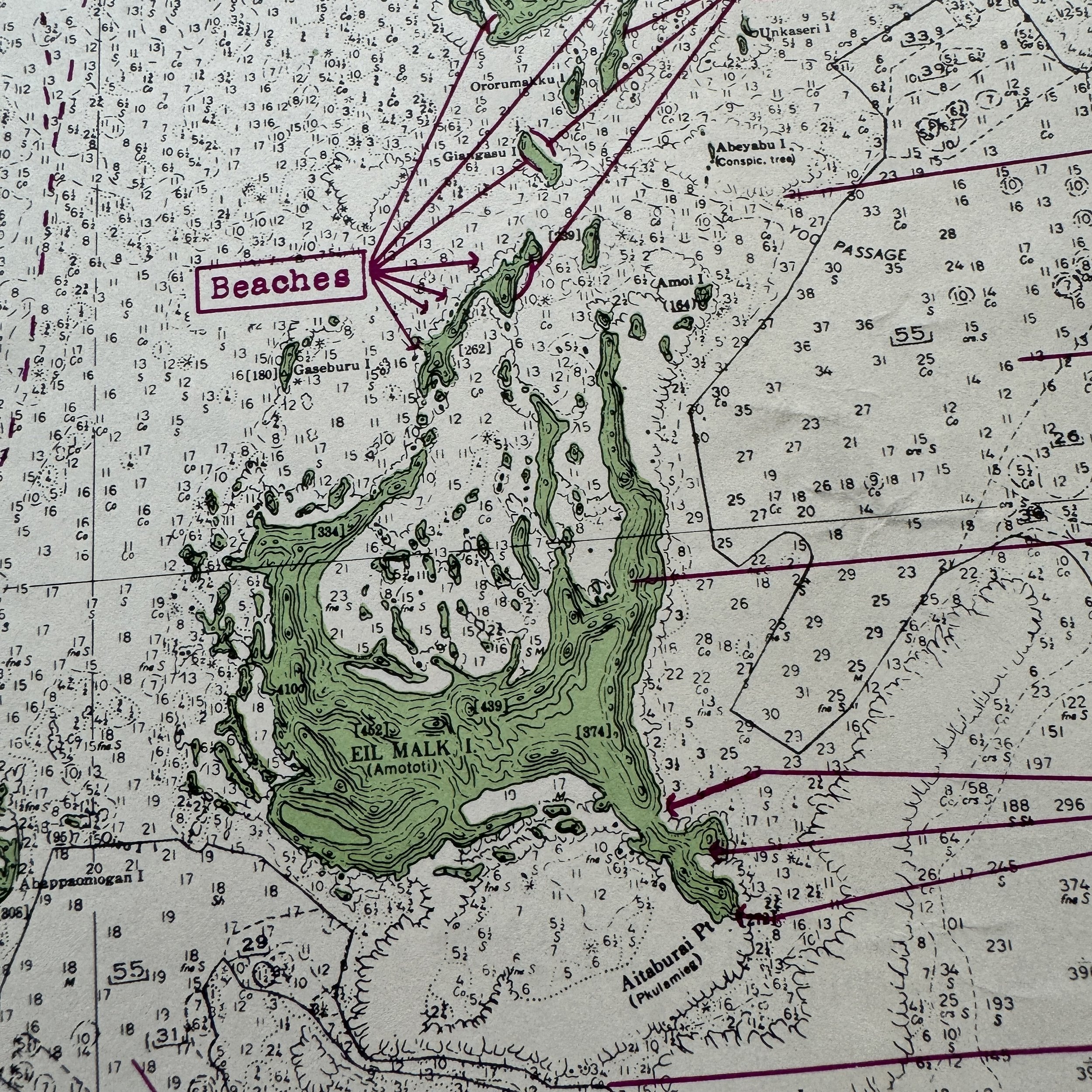



VERY RARE! WWII 1944 Operation Stalemate II - Palau Campaign (Urukthapel & Eilmalk Island) CONFIDENTIAL Combat Intelligence Invasion Maps (Double-Sided)
Comes with a hand-signed C.O.A.
Size: 13 x 14 inches
This incredibly rare and museum-grade WWII artifact is an original World War II Operation Stalemate II CONFIDENTIAL marked combat intelligence invasion maps (double-sided).
As per military classification guidelines at the time, it states, “It is recommended that "Top Secret" material - Operation Plans and Orders - be reclassified downward to "Secret or Confidential" prior to the start of an operation by a sufficient length of time to permit of adequate and timely distribution to commanders and officers and concerned. Only when in that area of combat theater can maps, reports, and plans be re-classified as “Restricted” to be used in combat and in the field.”
Dated June 1944 (3 months prior to the D-Day invasion of the Palua Islands) this map was a part of the largest amphibious operation in the Pacific to date, with more than 1,600 ships and craft and more than 800 aircraft deployed.
The Joint Intelligence Center Pacific Ocean Areas (JICPOA) played a pivotal role in producing military intelligence during World War II, particularly in the Pacific Theater. Established in 1943 under the command of Admiral Chester Nimitz, JICPOA was tasked with gathering, analyzing, and disseminating intelligence across the vast Pacific Ocean Area, covering millions of square miles of ocean and land. JICPOA’s multi-branch organization combined resources from the U.S. Army, Navy, Marine Corps, and other intelligence units, making it a hub for coordinated intelligence operations during the war.
One of JICPOA’s most significant contributions during WWII was in the preparation for amphibious assaults, such as the Battle of Peleliu in the Palau Islands, part of the larger Operation Stalemate II in 1944. JICPOA was responsible for producing detailed intelligence maps that were critical for the U.S. military's planning and execution of the invasion. These maps were created from aerial reconnaissance, submarine patrols, and photo interpretation, and they provided precise topographical details, enemy troop positions, and the layout of defensive installations, including the extensive cave networks that Japanese forces used for fortification.
For the Battle of Peleliu, JICPOA’s intelligence maps informed U.S. commanders about the island’s challenging terrain, fortifications, radio systems and more giving the U.S. forces a clearer understanding of what to expect. However, despite these detailed maps and military intelligence, the battle proved more difficult than anticipated due to the Japanese strategy of using fortified positions rather than a direct beach defense, leading to a protracted and costly engagement.
JICPOA’s ability to produce accurate intelligence maps underlined the importance of coordinated intelligence in modern warfare. The maps not only provided essential strategic insights but also saved lives by enabling U.S. forces to better prepare for the enemy’s defenses. In the Battle of Peleliu and other Pacific campaigns, JICPOA’s intelligence gathering and map production were critical in shaping the success of U.S. operations, contributing to the eventual Allied victory in the Pacific.
The Invasion of the Palau Islands and the Battles of Urukthapel and Eilmalk Island
The Pacific Theater of World War II is known for its vast island-hopping campaigns, fierce battles, and strategic importance in the effort to defeat Imperial Japan. One of the pivotal yet lesser-known campaigns involved the invasion of the Palau Islands, a small group of islands in the western Pacific. Among these islands, the battle for Peleliu is perhaps the most famous, but the skirmishes on the neighboring islands of Urukthapel and Eilmalk also played crucial roles in the broader effort to control the Palau group. The fight for these islands exemplified the brutal conditions of the Pacific War, highlighting the intense resistance offered by the Japanese and the resourcefulness of American forces.
Strategic Importance of the Palau Islands
The Palau Islands are part of the Caroline Islands, located approximately 800 miles east of the Philippines. By the summer of 1944, American forces had begun pushing the Japanese back across the Pacific, seizing control of strategic islands to establish bases and airfields. These bases allowed Allied forces to conduct air raids on Japanese-held territories and eventually plan for the invasion of the Philippines, which was key to General Douglas MacArthur’s strategy of returning to reclaim the archipelago from Japanese occupation.
The Palau group, particularly the island of Peleliu, was chosen for invasion due to its airstrip, which the Japanese could use to defend against Allied operations in the Philippines. However, the islands surrounding Peleliu—such as Urukthapel and Eilmalk—held their own significance. They contained important defensive positions, supply routes, and staging areas that could support the Japanese garrison on Peleliu. The capture of these islands would help isolate Peleliu and allow American forces to secure the entire Palau archipelago.
Prelude to the Battles
The invasion of the Palau Islands was part of Operation Stalemate II, which commenced on September 15, 1944. The main thrust of the operation was directed at Peleliu, where the 1st Marine Division faced one of the most grueling battles of the Pacific War. However, even as the Marines fought for Peleliu, American forces recognized that the surrounding islands could not be ignored. Japanese forces had fortified Urukthapel and Eilmalk, among others, constructing extensive defensive positions, bunkers, and cave systems that would allow them to harass American operations and potentially reinforce Peleliu.
The assault on Urukthapel and Eilmalk was carried out by elements of the 81st Infantry Division, who were tasked with clearing these smaller islands of Japanese defenders while Peleliu was still being contested. The 81st Infantry Division, known as the “Wildcat Division,” was already engaged in fierce combat on Angaur, another island in the Palau group, but were redeployed to mop up Japanese resistance elsewhere in the archipelago.
The Battle of Urukthapel
Urukthapel, located to the northeast of Peleliu, was a strategically vital island. It contained several Japanese fortifications, as well as terrain that allowed defenders to command a view of the surrounding waters. This made the island an ideal staging area for Japanese forces to launch counterattacks or sabotage missions against American positions.
On September 21, 1944, following the initial success on Peleliu and Angaur, American forces turned their attention to Urukthapel. The landing on the island was met with stiff resistance. Japanese forces had dug in, utilizing the island’s natural caves and constructed bunkers to create a formidable defense network. The rugged terrain of Urukthapel, characterized by steep hills and dense jungle, further complicated the American advance.
Despite the challenging conditions, the American forces systematically advanced, using flamethrowers, grenades, and demolitions to root out the Japanese defenders. The battle for Urukthapel was a grueling slog, with American troops encountering numerous ambushes and sniper fire from hidden positions. In addition to Japanese soldiers, American forces also had to contend with the island’s tropical climate, which contributed to heat exhaustion and diseases such as malaria.
The Japanese defenders on Urukthapel were determined to fight to the death, and as on Peleliu, they utilized the strategy of defense in depth, withdrawing to secondary positions as the Americans advanced. This strategy, though effective in slowing the American advance, ultimately resulted in the total destruction of the Japanese garrison. By the end of September, American forces had secured Urukthapel, but the cost in casualties and the time it took to clear the island demonstrated the tenacity of the Japanese defense.
The Battle of Eilmalk Island
After securing Urukthapel, American forces quickly moved to take Eilmalk Island, located to the east. Like Urukthapel, Eilmalk was fortified by Japanese forces, though it was not as heavily defended. The island was of strategic importance due to its proximity to Urukthapel and Peleliu, making it a potential staging area for further operations.
The assault on Eilmalk began on October 1, 1944. The American forces, now experienced in the tactics used by the Japanese defenders on the other Palau Islands, approached the battle with caution. Artillery and aerial bombardments were used extensively before the ground assault, softening Japanese positions and disrupting communications. As the infantry landed, they encountered pockets of resistance, but the Japanese defenders were fewer in number compared to those on Urukthapel.
Despite the relative ease of the initial landing, the American advance was slowed by well-concealed defensive positions. Japanese soldiers, many of whom had likely retreated from other islands, fought from caves and bunkers, attempting to inflict as many casualties as possible before their positions were overrun.
By October 4, American forces had successfully cleared Eilmalk Island. The fighting had been less intense than on Urukthapel, but the battle still showcased the Japanese willingness to defend even the most isolated positions to the last man. The capture of Eilmalk marked the end of the major battles in the Palau Islands, though isolated pockets of resistance would continue to be mopped up in the following weeks.
Aftermath and Strategic Impact
The invasion of the Palau Islands, particularly the battles on Urukthapel and Eilmalk, played a crucial role in the overall campaign to secure the western Pacific. Though the primary focus of Operation Stalemate II was on Peleliu, the capture of the surrounding islands like Urukthapel and Eilmalk helped isolate Japanese forces and deny them the ability to launch counterattacks or resupply their garrisons.
While the battles for these smaller islands did not attract the same attention as the bloodier and larger-scale engagements on Peleliu or Iwo Jima, they were nonetheless critical in the broader American strategy. By securing the Palau Islands, American forces gained valuable airfields and staging areas that were used in subsequent operations, including the liberation of the Philippines.
The lessons learned during the fighting on Urukthapel and Eilmalk—particularly in terms of dealing with well-entrenched Japanese defenders—would prove invaluable as American forces moved closer to Japan. The brutal conditions, including the tropical heat, disease, and fierce Japanese resistance, served as a stark reminder of the challenges still to come.
In conclusion, the invasion of the Palau Islands and the battles of Urukthapel and Eilmalk were important chapters in the Pacific War. Though often overshadowed by larger engagements, these battles exemplified the determination of both American and Japanese forces. For the Americans, the successful capture of these islands was a stepping stone toward victory in the Pacific. For the Japanese defenders, the battles represented a last-ditch effort to slow the American advance, even at the cost of their own lives. These islands, though small and remote, played a significant role in the broader context of World War II.